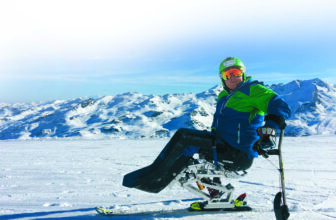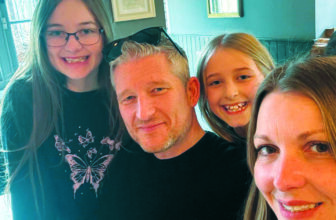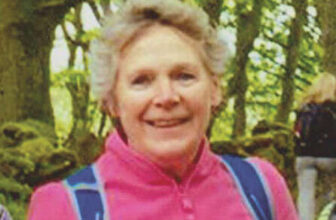
Bert Lade’s Fitness Club. (1944-45) held at Cranleigh School Gym. Phil is on the top row, 4th from the Right.
Top Row – Murry Hook. Brian Adams. Jack Vodden. Lewis Tuter. Bert Lade. Phil Tilbury. Norman Cobb. Tony Gravit. Peter Trigg. Mid Row – Spencer Freemantle. Irvin Hook. Len Avery. Peter Reid. Tony Ward. Mr Blogg. Jim Lea. Tony Hughes. Alan Ragless. Ray Monk. Bottom Row – Gerald Burrage. Arthur Greatorix. Mervin Hughes. Colin Stonestreet. Peter Monk. Malcomb Lea. Arthur Spicer.
I was born in Wonersh and brought up in Cranleigh. My family moved to 11 Parkhouse Cottages, Ewhurst Road in 1930, where I lived until 1952 when we moved to Parsonage Road. The house had 3 bedrooms. I had a big family with five sisters and one brother, Mum and dad slept in one bedroom, the girls in another and us two boys in the other. My sisters were all older and were out at work by the time I came along so we never really seemed limited for space.
I attended Cranleigh Infant School until I was 7, then moved to the ‘Big School’ which is now the Cranleigh Arts Centre. The Headteacher’s name then was Mr Blog and there were several others – Mr Gillum and Miss Martin. While I was there a lot of evacuees came to the school bringing their own teachers with them, but we weren’t taught by them so I don’t recollect their names. There were so many evacuees that it pretty much doubled the size of the school. Our class size was about 35 students. It ended up being a haphazard system where we were split between the different sites of either the Village Hall, the Methodist Hall or St Andrew’s Church hall, walking from one to the other.
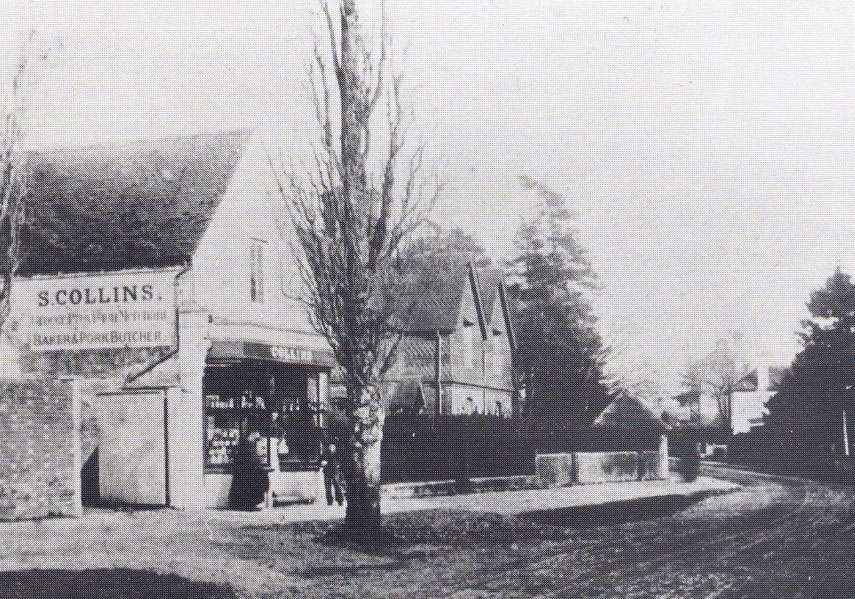
Collins the butchers 1886
Friday afternoons we had sport – it was either that or go mow Mr Blog’s lawn! He introduced football, which we hadn’t played previously as it was the war years. We would go to the ‘Rec’ to play our game, the area that is now the Health Centre car park.
I didn’t really enjoy school as I was never a very good scholar. I would look forward to the holidays like most kids. I remained at school until I was 14 and then left to get a job. I had worked as a delivery boy for the International shop (where the Curry Inn is today), delivering shopping and groceries locally from the age of 12. I was paid 5 shillings a week (25p) when I worked there. When I left school, I became what was known as a Warehouse man at International, being paid 17s 6d (87.5p) a week so, I went up a rung! When I was 15 my father decided I wasn’t earning enough money, so we looked around for something else. Mr Collins had an advert in his window for a new employee, to work in the factory at Collins Pork Butchers (where Collins Court is today) and so I applied. He made me wait a fortnight as he really wanted someone who was a little older, but having had no other applicants he offered me the chance.
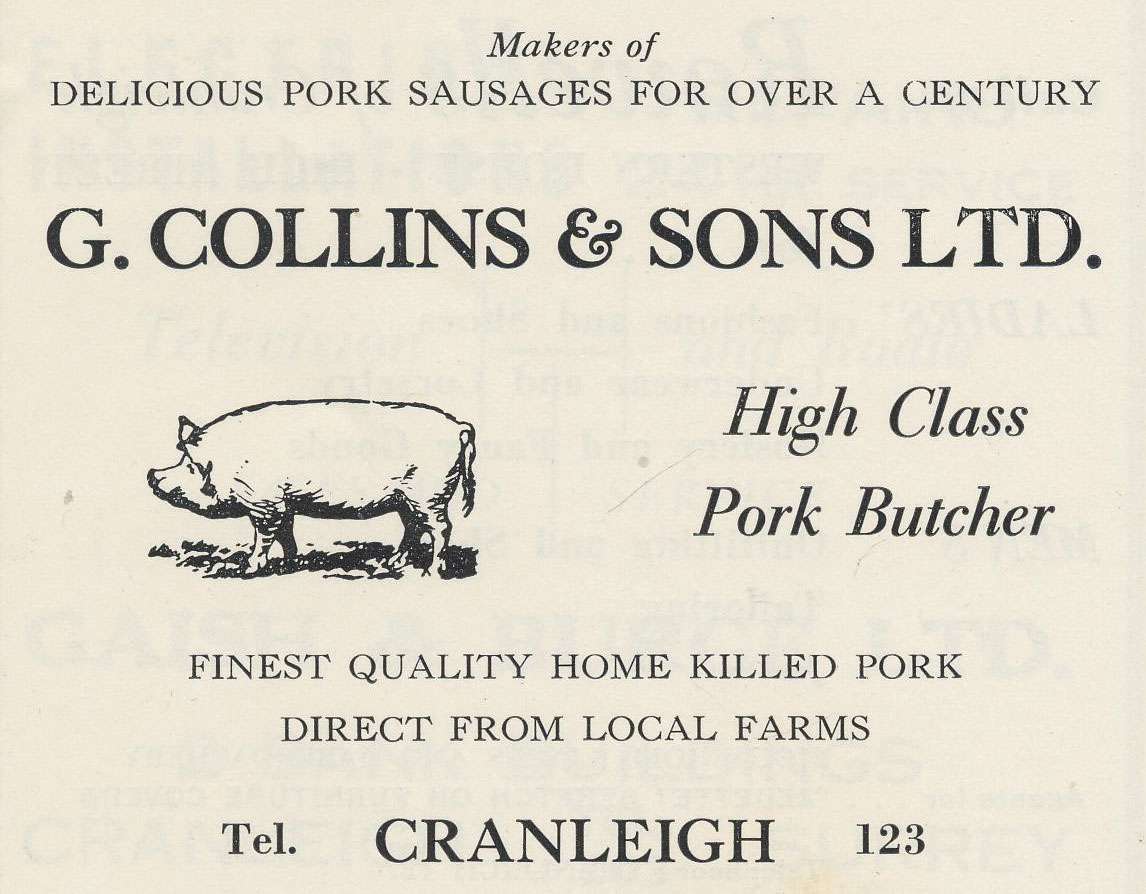
Collins the butchers Advert
I worked in the back room where there was a little factory, including a little room where we made the sausages. The actual shop was half way down the drive way.
Later when his two sons came out of the forces after the war, (one was in the army and the other was in the air force), Mr Collins had the stable block, further up the yard, turned into the factory.
There was no livestock on the premises because by then all animals had to be killed in Guildford and the carcasses delivered to us. Just after the war ended when I first went there, there was such a shortage of meat, it wouldn’t be delivered until the Thursday so we would have to wait till the end of the week to stock the shop.
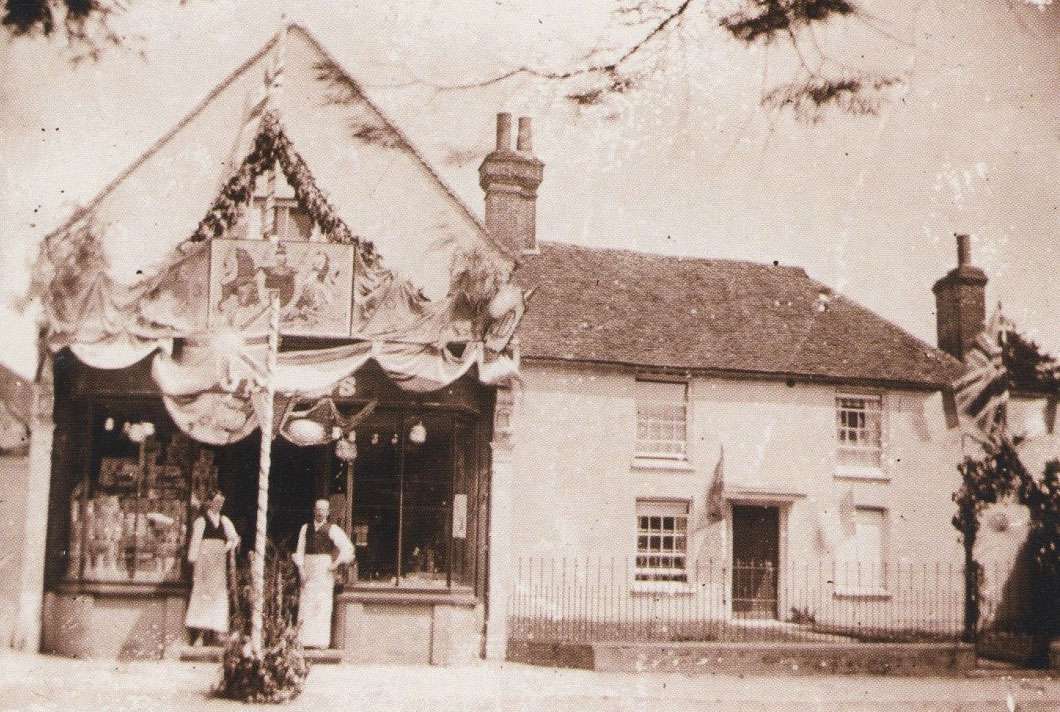
Collins in 1911 at the time of George V’s Coronation
No matter how many days I worked, he always paid me 30 shillings (£1.50p) a week. He was a very good boss and he would let me know when he wanted me. Apart from giving the shop a good clean on a Monday morning, there was no use for me at the beginning of the week. He used to say, ‘Right, I will let you know when the meats in’. It was very straightforward really.
It was a happy working environment and I worked there for about 45 years – come to think of it he never did tell me if I got the job – I was on probation all those years! Mr Collins worked until he was 85 when he packed up the shop.

Collins staff in 1912
There were 6 of us working there altogether, including him and his son. He built up a great reputation locally for his prize sausages, using sage as his secret ingredient. It made them taste different, he said. People travelled far and wide to try them. Mr Collins Senior told me that once they had sent Collins’ prize sausages (without any preservatives in them!) on the train from Cranleigh all the way up to Scotland. That’s how famous they were, before the war.
Mr Collins’ brother was in the army during the war. Though he survived the war he was seriously wounded and sadly died in England on his return. Up until then Mr Collins also ran a grocery store, which he lived above for a while, as well as the butcher’s shop.

The old British legion building in early 1900s
People still come up to me now and say ‘Oh I know you, you used to work at the butchers.’ Cranleigh was a small village in those days (about 2,000 people) so everybody knew one another. I worked on the ‘sausage side’ for about 20 years and then I started serving in the shop. I loved meeting people and cracking jokes. We had a really good relationship with our customers.
In the early days I was quite sporty. During the summer months I would play for St Andrew’s cricket club. Most of the season we played away games, until Cranleigh School were on holiday and we could then play at home on their cricket pitch.

On duty with the Royal Artillery in Dortmund, Germany
Mr Collins was a big Cranleigh Football Club fan. I don’t think he ever missed a match on a Saturday afternoon, he used to shut the shop just to watch it. I played in goal and left back. I wasn’t very good, but I made it hard for those who were!
We had a boy’s football team who played by the windmill opposite St Andrews church. The pitch was alongside the road, as at that time there was hardly any traffic.

Cranleigh Cross Country Team 1945
When I was 26 I started having problems with my ankles. It would take me more time to get ready to play than it did to actually play the game, as I had to bandage them up. A friend, Don Adams, said to me ‘come and join the Guildford referees and see what you think’. I went there and that was it, I started refereeing in 1957 and did it for a good 15 years, as I enjoyed it so much I just wanted to keep going. I finally finished around 1972.
My wife was a local girl, Nancy Beeson. She lived in the Rectory Cottages opposite the Handyman’s store. We were married in 1954. We have three children, two girls and a boy. After we were married, we moved into a house near what used to be called South Street, along near Dudley House. The house was owned by Miss Squibs. She and her brother were farmers and she let us have a couple of rooms at the cost of 10 shillings a week (50p in todays money). We lived there for about 3 years, until Mr Collins offered us a flat over the top of the shop, overlooking the High Street, where we stayed for 40 years. We’ve witnessed a lot of change out of our windows over years!

My sporting days whilst on National Service
My wife died in 2000 so my own life has changed since then. One of my daughters is still living locally in Cranleigh. My son has moved to Auckland, New Zealand and my other daughter moved to Christchurch, New Zealand. I visit them regularly, and even though it’s a very long way, I absolutely love it. I’ve actually made some friends myself out there, who live on a farm. They say, ‘There’s always a bed here for you, you can always come back whenever you like’. They’re wonderful people, who lead a wonderful life.
All those years ago in 1948, when it all started, my wife and I (on our first date) rode our bikes from Cranleigh to Dunsfold on bonfire night, which was quite significant. ‘Our gang’ as we called ourselves, had started the Cranleigh bonfire when I was still living in Ewhurst Road.
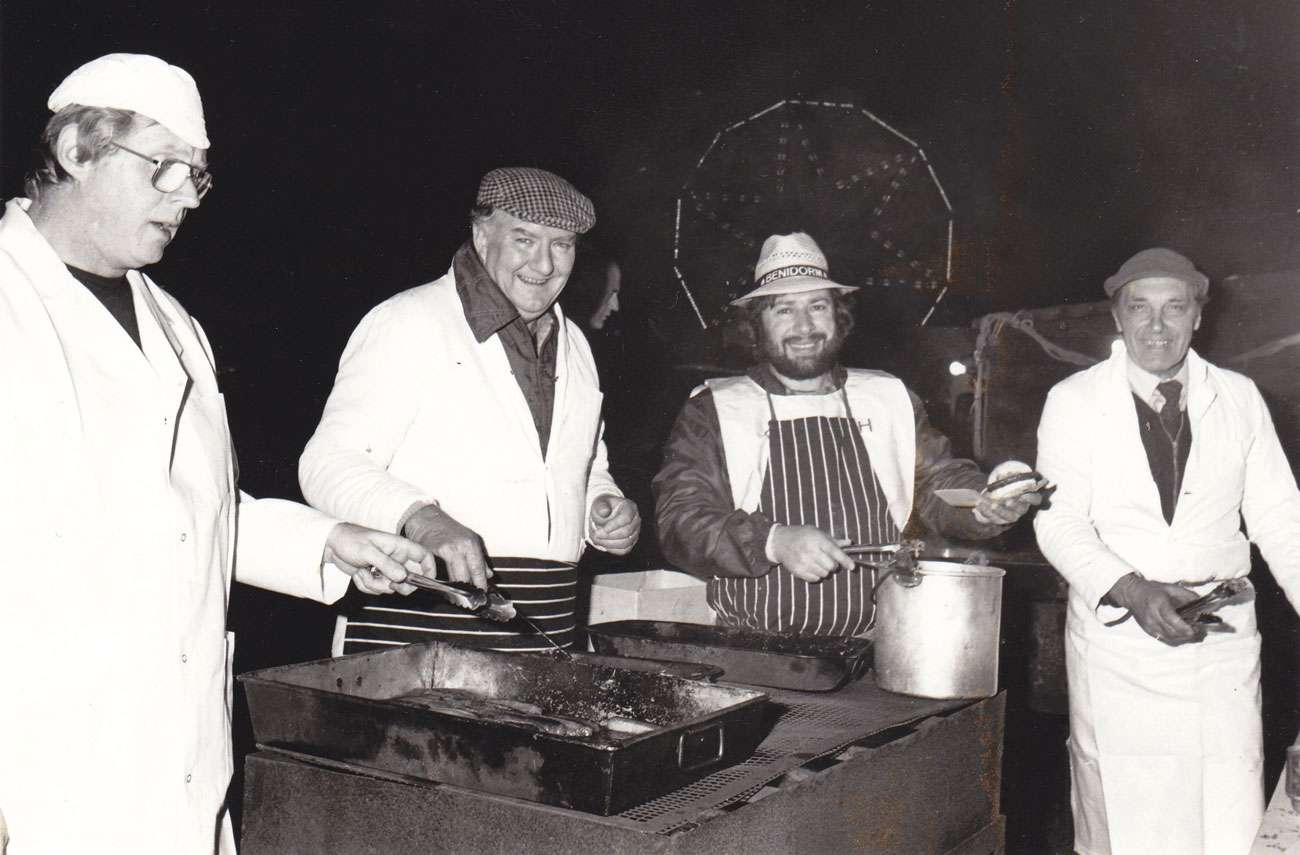
Volunteers cooking Collins sausages for the Cranleigh Bonfire . . . helping to raise funds for Cranleigh Lions Charity
The first bonfire was on Parkhurst Green. We would build the bonfire and even try to make our own fireworks though they didn’t come out very well – It was a bit dangerous looking back! We did that for the first 4 years and then the Council burnt the bonfire down early because they said it was too big and dangerous. It wasn’t until Charlie Beadell, a local farmer, moaned that there was no Cranleigh bonfire that things changed. He assured us he would sort matters out. He helped to run a haulage business, delivering bricks. On bonfire night, two lorries turned up on Parkhurst Green full of faggats and wood. It was piled up and set ablaze straightaway.
It went from there to The Common where it is now. That’s where it all began and we were the culprits. It’s been going for years now. We would collect money for local charities, just like they do now.
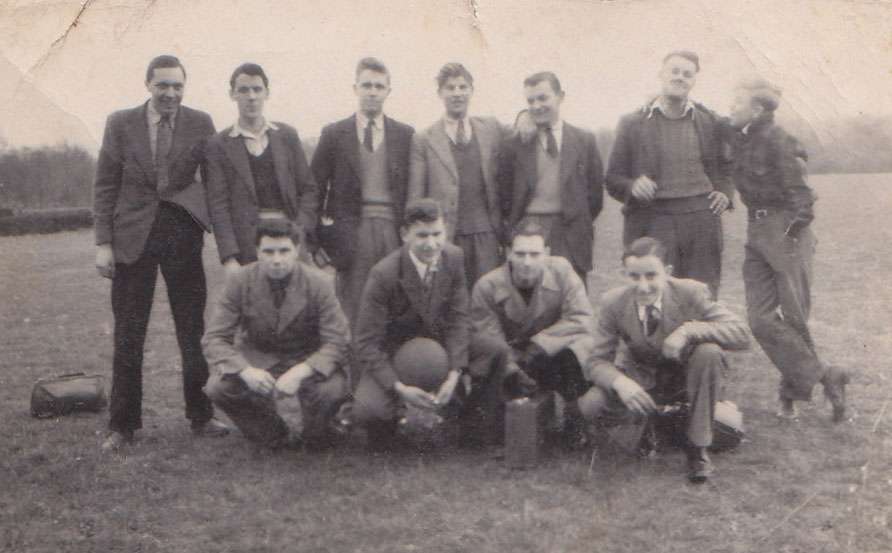
My refereeing days in the 50’s . . .
As well as starting up that tradition in the village, I became one of the first members of the Cranleigh Lions, and I’m certainly the oldest now at eighty eight years old! There’s only two of the original members left, myself and Ray Beeson. When the Lions began in 1976, the Cranleigh Lions was set up to help local charities. Ken Beadell started it and his father had something to do with it. Like the bonfire, the Lions collected and raised money for charities. It’s grown bigger and bigger every year.
We’ve got a certificate at the headquarters with all the names of the 30 initial members. Then people started to leave and we recruited more members. Lately we are up to almost 50. We need that number because we do so much more now. Every year the annual Classic Car Show alone generates a fair half of what we distribute. On a good year the car show turns over about £30,000 for Cranleigh Lions.

And on into the 70’s . . .
I was given an award for doing so much work with the Lions. We help a huge amount of people that perhaps haven’t got jobs or are struggling to make ends meet.
We receive requests from people at every meeting, they come through Social Services who write to us asking for help. We’re never told their names. If they present a good case it goes through and we do what we can. We also assist the schools when students go away on trips. If parents can’t afford to send their child on a trip, they apply to us to see whether we can fund them so they can go. I don’t think we have ever had to refuse anyone to this day.
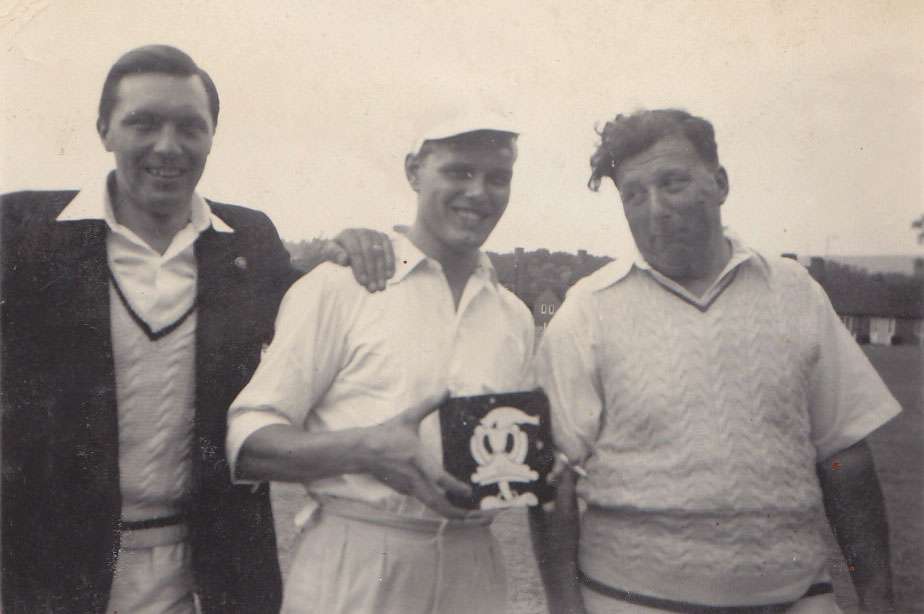
All out for a duck, 3 of us, with our trophy
As if the Cranleigh Lions wasn’t enough, I also got involved with the British Legion, after I came out of national service. My father was in the Royal Artillery Association (RAA) before the First World War, in India. When he came back he had eye trouble so he couldn’t serve during the First World War. He worked at Chilworth Gunpowder Factory and he took me along to the Legion, which was in Ewhurst Road then. Some people think the first Legion’s meeting was at the White Hart Pub, but the first meeting was actually held at the White Heart Pub in Mead Road, in the block where the funeral company is now. Opposite there is a building with a turret on top, and that was our Legion. The ground floor was a bar and upstairs was a social bar. We met there and it seemed to grow and grow. My sister, Mary Rushen was very involved and she kept pushing me to do more.
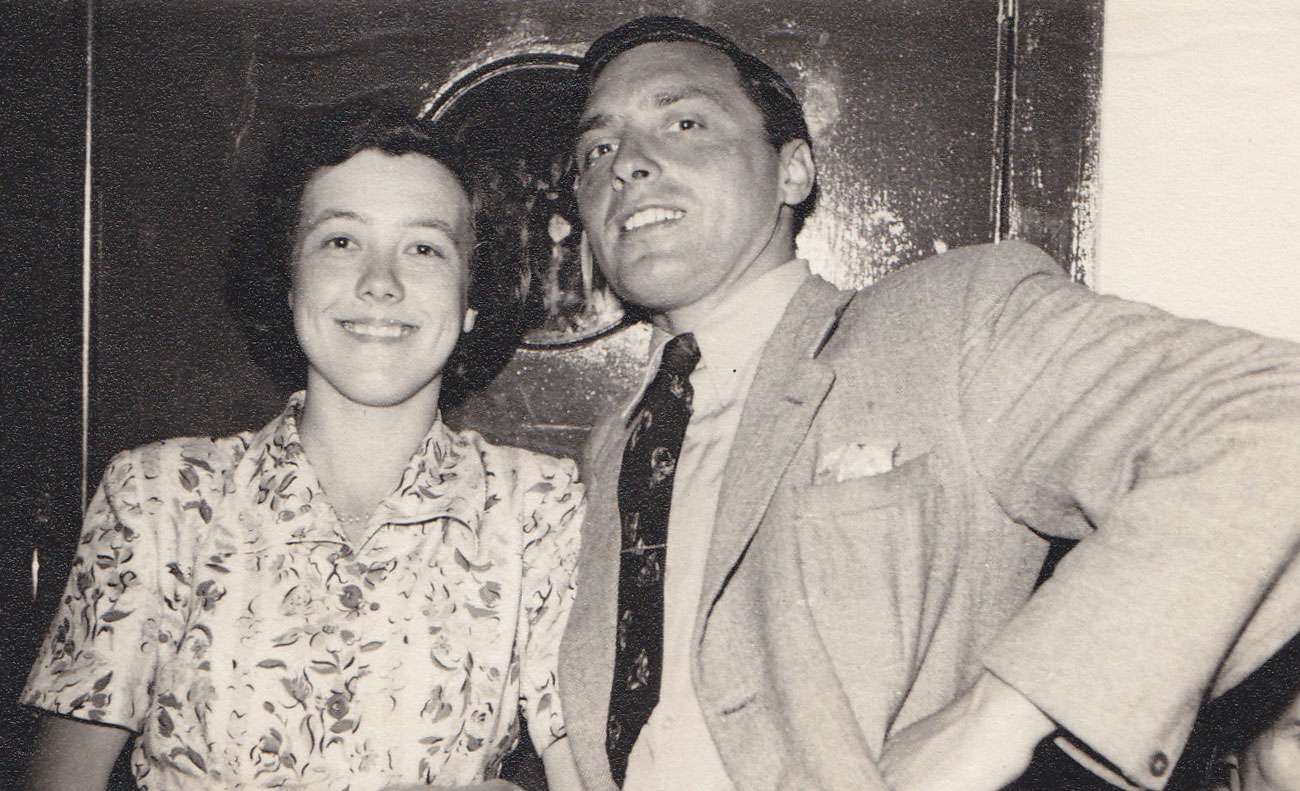
On a night out with Nancy. . .
It was mainly men that congregated there in those days. The men had one part of the building and the ladies had another, in a different room. I’ve no idea why. Then all of a sudden it changed. The wall was pulled down to make the club bigger and bring everyone together.
Over the years those premises became too small. On a Saturday night you could hardly get in there. So we opened a new club in 1997. A few years ago, the Club was going downhill fast and we had very little money. We were paying subscriptions, but 75% of it was going to the Legion, and the club was run on very little money. It was decided to take it out of the Legion’s hands. We don’t have to pay Legion fees now and it’s going pretty well.
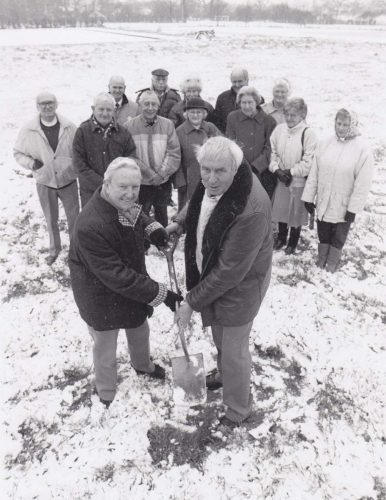
John Stone and Walter Dixon digging the first foundation for the new club on a cold February morning in 1996
Unfortunately, our Chairman has just passed away – Brian Adam – and most of our members are in their 80s but we’ll keep on going! Our youngest member is Trevor Cobby and I’ve recently recruited my son-in-law to be the Poppy organiser. They made £18,230 last year for the Poppy appeal and all of it goes directly into the fund.
It’s all volunteer work and of course, I’m now working with the rest of the community on organising this year’s big Poppy event. It’s going to be a real big one on 11th November this year, all the names of the fallen are going to be read out because it’s the 100 year anniversary of the end of the First World War. We are planning a very memorable time. We don’t want the Legion and its heritage ever to be forgotten.

Laying a wreath at the Cranleigh Cenotaph
For further information contact: www.cranleighsportsandsocialclub.com



